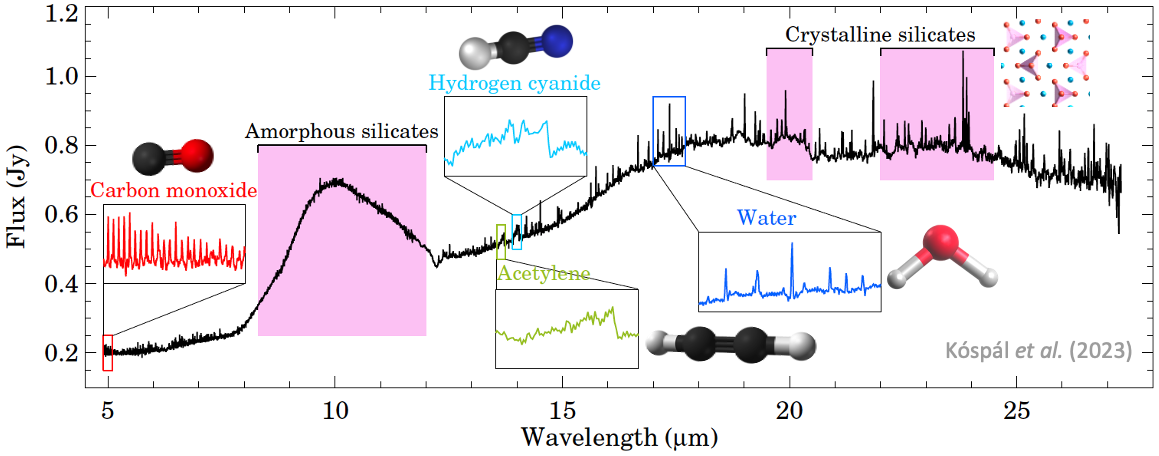An international team led by researchers from the Konkoly Observatory at the ELKH Research Centre for Astronomy and Earth Sciences (CSFK), used the MIRI spectrograph onboard the James Webb Space Telescope (JWST) to study the circumstellar disk of the Sun-like young star EX Lupi. Thanks to the exquisite sensitivity of the instrument, they rediscovered long-lost silicate crystals that had formed in an earlier outburst of EX Lupi. In the infrared spectrum of EX Lupi’s disk, they also detected molecules that are essential ingredients for the development of life, among others carbon monoxide and water vapor. The crystals that formed in a hot environment have now moved to a colder part of the protoplanetary disk that encircles the star, where they may become parts of forming comets and planets. This provides a possible explanation for the high amount of crystalline grains in comets in our own solar system. A study with the results of the research was published in the Astrophysical Journal Letters.
Read more in the press release at https://elkh.org/en/news/long-lost-crystals-in-the-protoplanetary-disk-of-a-young-star-were-successfully-rediscovered



